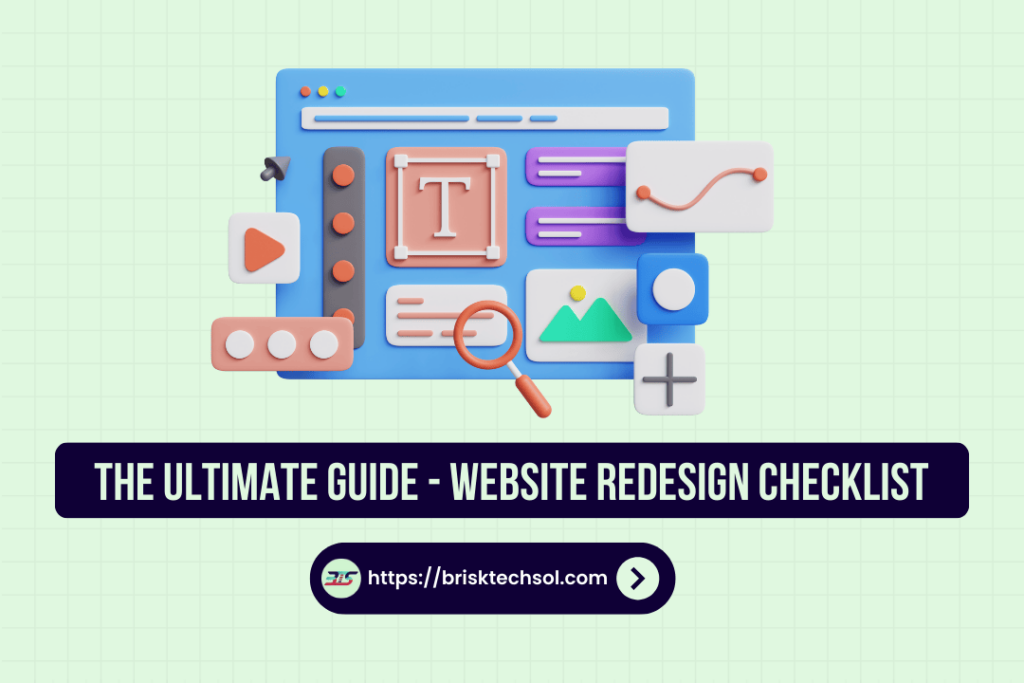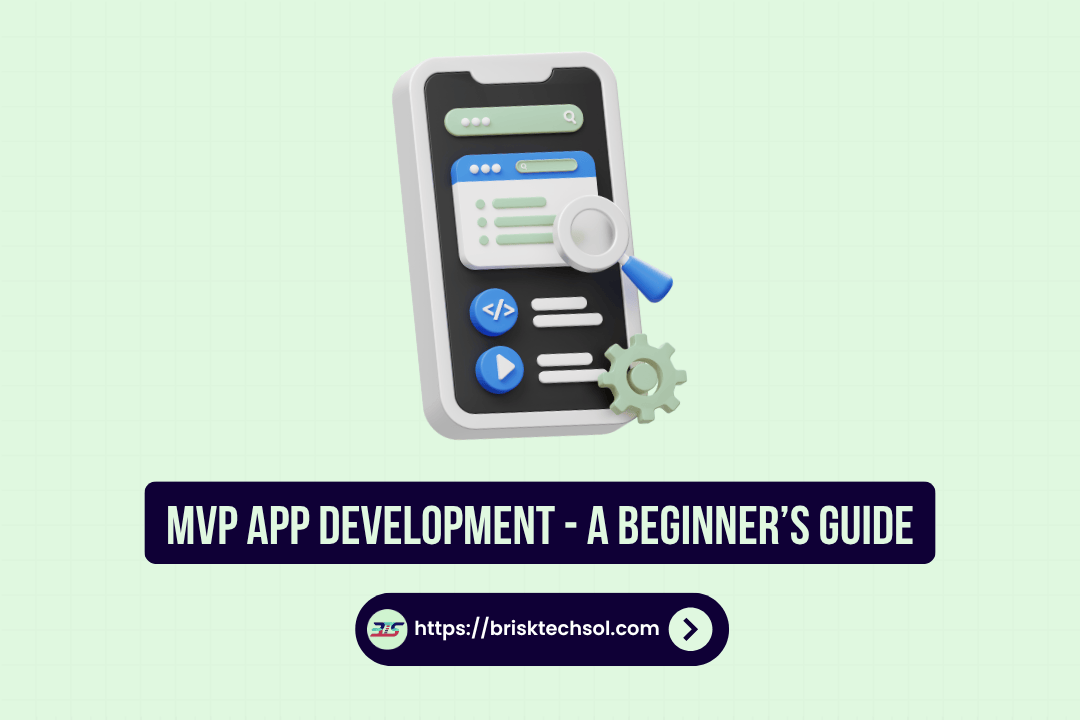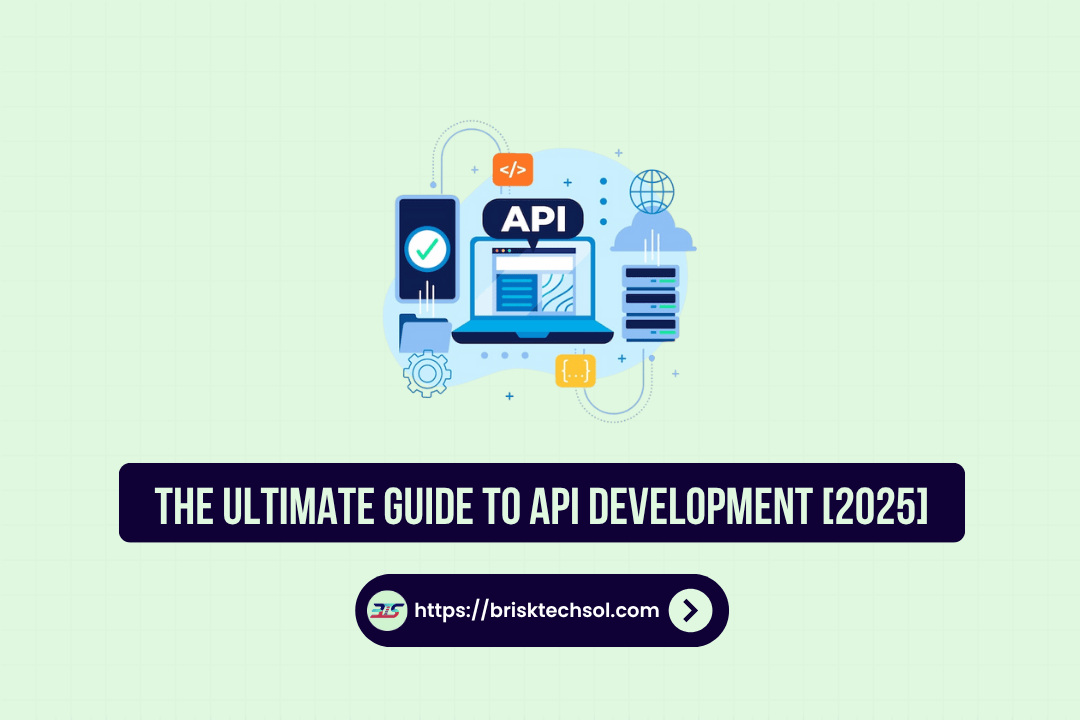Imagine your website as a powerful tool that not only looks great but also drives business growth. A thoughtful redesign can improve functionality, enhance user experience, boost SEO, and create a modern, cohesive brand identity. This step-by-step website redesign checklist will guide you through the entire process, ensuring your website is optimized for success, user engagement, and long-term growth.
Understanding the Need for a Redesign
Before diving into the redesign process, it’s important to understand why a website overhaul might be necessary. Over time, technology, design trends, and user expectations evolve. An outdated website can lead to poor user experience, slow performance, and lost opportunities for conversions. A redesign is not merely a cosmetic update it’s a strategic move to realign your online presence with current best practices and business goals.
A few common reasons for a website redesign include:
- Outdated Visuals: Your current design may no longer reflect modern aesthetics or your brand identity.
- Poor User Experience: Slow load times, confusing navigation, or non‑responsive design can deter visitors.
- SEO Challenges: Old code and outdated content can negatively impact your search engine rankings.
- Rebranding: A change in business strategy or brand identity often necessitates a website update.
- Technological Upgrades: Moving to a new CMS or improving site security may require a redesign.
Understanding these factors helps you set clear objectives and tailor your redesign strategy to meet both user needs and business goals.
Pre‑Redesign Planning: Laying the Foundation
A successful website redesign starts with thorough planning. This phase is about understanding your current website’s performance, defining clear objectives, and gathering insights from both internal stakeholders and your target audience.
Define Clear Goals
Begin by asking yourself what you want to achieve with your redesign. Your goals might include:
- Enhancing user experience and increasing engagement.
- Boosting search engine rankings through better SEO.
- Reflecting a refreshed brand identity.
- Improving conversion rates through clearer calls-to-action.
- Modernizing technology to support faster load times and increased security.
Clearly defined goals provide a roadmap for the redesign process and serve as benchmarks for success.
Conduct a Comprehensive Website Audit
Before making any changes, perform an in‑depth audit of your current website. This audit should assess technical performance, design elements, content quality, and user behavior. Consider these points:
- Performance Metrics: Check load times, uptime, and mobile responsiveness.
- SEO Analysis: Review your site’s keyword rankings, meta tags, and URL structure.
- User Analytics: Understand visitor behavior using tools like Google Analytics.
- Content Evaluation: Identify which pages are outdated or underperforming.
Summary for Pre‑Redesign Audit:
- Analyze current website performance (speed, mobile responsiveness)
- Evaluate SEO performance (keywords, meta tags, URL structure)
- Assess user engagement through analytics tools
- Review content for relevancy and quality
Set Budget, Timeline, and Stakeholder Expectations
Effective planning involves setting a realistic budget and timeline. Engage all key stakeholders—including marketing, IT, and design teams—to ensure everyone’s expectations are aligned. Establish a phased approach if needed to manage resources better.
- Budget: Define financial limits for design, development, and content updates.
- Timeline: Outline a schedule for each phase of the redesign.
- Stakeholder Input: Gather feedback from team members and customers to inform priorities.
Design Considerations: Building a Visual and Functional Masterpiece
The design phase of your website redesign is where your brand’s personality and usability come together. A great design not only looks appealing but also supports a seamless user experience.
Visual Identity and Brand Consistency
Your website should reflect your brand’s identity consistently across all pages. This includes using your logo, color palette, typography, and imagery in a way that aligns with your overall branding strategy. A cohesive visual identity builds trust and recognition.
Key Points for Visual Identity:
- Use consistent logos, colors, and fonts.
- Develop a style guide or mood board for reference.
- Ensure imagery and graphics reflect your brand personality.
- Maintain uniformity across all digital touchpoints.
User Experience (UX) and Navigation
User experience is critical to retaining visitors and guiding them through your website. A clear, intuitive navigation structure, combined with a logical layout, makes it easier for users to find the information they need.
UX Best Practices Include:
- Simple Navigation: Create a menu structure that is easy to understand.
- Clear CTAs: Use prominent calls-to-action to guide users toward key pages.
- Whitespace: Employ sufficient spacing to reduce clutter and focus attention.
- Accessibility: Ensure the design meets accessibility standards so all users can navigate your site easily.
Responsive and Mobile-First Design
With increasing numbers of users browsing on mobile devices, a responsive design is essential. Your site must look and perform well on desktops, tablets, and smartphones alike.
- Responsive Layout: Use flexible grids and media queries to adjust content dynamically.
- Mobile Optimization: Prioritize mobile-friendly design elements and test on multiple devices.
- Fast Loading Times: Optimize images and code to ensure quick load times on all devices.
Content Strategy and Messaging: Telling Your Brand Story
Content is the backbone of your website, and a redesign offers an opportunity to review and refresh your messaging. Effective content strategy ensures that your website not only looks good but also communicates your brand values clearly and engages your audience.
Content Audit and Strategy
Start by auditing your existing content. Identify what should be kept, updated, or removed. Consider the following:
- Relevance: Ensure all content aligns with your current brand and business objectives.
- SEO: Optimize content with relevant keywords and proper meta tags.
- Engagement: Craft clear, concise, and compelling copy that speaks directly to your audience.
- Visual Integration: Incorporate images, videos, and infographics to complement text and enhance engagement.
Points for Content Strategy:
- Evaluate existing content for relevancy and performance.
- Optimize content for search engines.
- Ensure messaging aligns with brand values.
- Include high-quality visuals to support written content.
Consistent Messaging and Tone
Every piece of content on your website should communicate a unified message and maintain a consistent tone. This consistency builds trust and reinforces your brand identity.
- Voice: Define a clear tone of voice (e.g., friendly, professional, authoritative) and apply it throughout.
- Core Messaging: Establish key messages that reflect your brand’s mission and values.
- Storytelling: Use narratives to create an emotional connection with your audience.
- CTAs: Ensure calls-to-action are clear and align with your overall messaging.
Technical Considerations: Ensuring a Solid Foundation
While design and content are vital, technical performance is equally important in a website redesign. A technically sound website supports better user experience, improved SEO, and greater security.
Platform, CMS, and Hosting
Select a strong platform or content management system (CMS) that meets your needs. The right CMS makes it easier to update content, manage SEO, and scale as your business grows.
- Popular Options: WordPress, Drupal, Joomla, or custom solutions.
- Hosting: Choose a reliable hosting provider that offers fast load times and minimal downtime.
- Scalability: Ensure your chosen solution can handle increased traffic and future growth.
Performance Optimization
Website performance directly affects user experience and SEO rankings. Optimize your site for speed and efficiency by:
- Image Optimization: Compress images and use next‑gen formats.
- Code Optimization: Minify CSS, JavaScript, and HTML.
- Caching: Implement caching strategies to reduce server load.
- CDN Usage: Use a content delivery network to deliver content faster globally.
Technical Checklist in Bullet Points:
- Select a scalable CMS and reliable hosting provider.
- Optimize images and minify code.
- Implement caching and use a CDN.
- Ensure mobile responsiveness and cross-browser compatibility.
Security and Data Protection
Security is a critical component of any website. A secure website protects user data and builds trust.
- SSL Certificate: Ensure your site has an SSL certificate for encrypted connections.
- Regular Updates: Keep your CMS, plugins, and scripts updated.
- Backups: Schedule regular backups to prevent data loss.
- Security Audits: Perform routine security checks and vulnerability assessments.
SEO and Analytics: Measuring Success
A website redesign is an excellent opportunity to enhance your SEO and set up effective analytics. With a solid SEO strategy, you can attract more organic traffic and better understand user behavior.
SEO Best Practices
Focus on both on‑page and technical SEO to ensure your redesigned website is easily discoverable by search engines.
- Keyword Research: Identify and incorporate relevant keywords naturally throughout your content.
- Meta Tags: Update titles, meta descriptions, and header tags to reflect new content.
- URL Structure: Create clean, descriptive URLs and set up proper 301 redirects for any changed pages.
- Sitemaps: Update your XML sitemap and submit it to search engines.
- Internal Linking: Enhance navigation and SEO by linking relevant pages within your site.
Analytics Setup
To measure the success of your redesign, set up and configure analytics tools.
- Google Analytics: Track user behavior, traffic sources, and conversion rates.
- Google Search Console: Monitor indexing status and identify SEO issues.
- Heatmaps: Use tools like Hotjar or Crazy Egg to see where users click and how they navigate.
- Regular Reporting: Schedule periodic reviews of analytics data to identify trends and areas for improvement.
Points for SEO & Analytics:
- Conduct keyword research and update meta tags.
- Use 301 redirects and update sitemaps.
- Set up Google Analytics and Search Console.
- Monitor user behavior with heatmaps and regular reports.
Development, Testing, and Launch
After planning, designing, and optimizing your content and technical setup, the next phase is to build, test, and launch your new website.
Development and Coding
During development, it’s essential to build your website using clean, efficient code that supports modern web standards. This phase involves:
- Coding Best Practices: Use semantic HTML, clean CSS, and organized JavaScript.
- Version Control: Utilize tools like Git to manage changes and collaborate effectively.
- Integration: Ensure that all third‑party tools and plugins are properly integrated.
Rigorous Testing
Before launch, rigorous testing ensures that every aspect of your website works as intended.
- Cross-Browser Testing: Verify functionality across popular browsers (Chrome, Firefox, Safari, Edge).
- Device Testing: Test responsiveness on various devices including desktops, tablets, and smartphones.
- User Testing: Conduct usability testing with real users to gather feedback on navigation, design, and content.
- Bug Fixes: Address any issues uncovered during testing promptly.
Testing Checklist:
- Validate HTML/CSS and fix errors.
- Ensure compatibility on multiple browsers and devices.
- Gather user feedback through testing sessions.
- Resolve bugs and optimize load times.
Launch and Post‑Launch Strategies
The launch is just the beginning of your website’s new chapter. Post‑launch, you must monitor performance and continuously improve the site.
- Soft Launch: Consider a soft launch to a limited audience for final feedback.
- Backup: Take a complete backup of your site before going live.
- Communication: Announce the new website through email, social media, and press releases.
- Performance Monitoring: Use analytics to track key metrics and user behavior.
- Continuous Improvement: Regularly update content, fix issues, and optimize SEO based on performance data.
Post‑Launch Maintenance and Continuous Improvement
A website is never truly finished. Continuous maintenance and updates are crucial to keep your site performing optimally.
- Regular Updates: Keep content fresh and update design elements periodically.
- User Feedback: Encourage visitors to provide feedback and use it to make improvements.
- Security Audits: Schedule routine security checks to safeguard your site.
- Performance Reviews: Analyze analytics regularly and make adjustments to enhance user experience and SEO.
Key Takeaways
- Understand the Need: Recognize that a redesign isn’t just cosmetic—it’s a strategic move to address outdated visuals, poor UX, and SEO issues.
- Thorough Pre‑Planning: Set clear goals, perform a comprehensive website audit, and align stakeholder expectations to create a solid foundation.
- Cohesive Visual Identity: Ensure your design reflects your brand consistently with well-chosen colors, typography, and imagery.
- User Experience Matters: Prioritize intuitive navigation, responsive design, and accessibility to enhance overall engagement.
- Content Strategy: Audit, refresh, and optimize your content to align with your brand and improve SEO.
- Technical Excellence: Focus on performance optimization, mobile responsiveness, and security to support a seamless experience.
- Rigorous Testing: Conduct extensive cross-browser, device, and user testing to catch issues early and ensure smooth functionality.
- Post‑Launch Maintenance: Monitor performance, gather user feedback, and continuously update your site to sustain long-term success.
FAQ’S
1. What is a website redesign checklist?
A website redesign checklist is a comprehensive guide that outlines every step—from planning to launch—to ensure your site is updated effectively and meets current standards.
2. Why should I redesign my website?
A redesign improves user experience, boosts SEO, refreshes your brand image, and can significantly increase conversion rates by aligning your site with modern best practices.
3. How do I start the redesign process?
Begin with clear goal-setting and a thorough audit of your current website, then plan your design, content, and technical strategy before moving to development and testing.
4. What technical aspects should I focus on?
Ensure your site is optimized for speed, mobile responsiveness, security, and integrates smoothly with your chosen CMS and third‑party tools.
5. How can I measure the success of my new website?
Monitor key metrics such as traffic, engagement, conversion rates, and SEO rankings using tools like Google Analytics and Search Console, and gather user feedback to continually improve the site.









